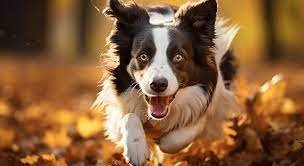Even after millennia of living with domesticated dogs, we still don’t understand why our furry companions wag their tails. Scientists from the German Max Planck Institute now come up with a new explanation.
Humans have lived in a close relationship with dogs for thousands of years. In more than one case, literally lives depend on people and dogs getting along as well as possible. Nevertheless, some elements of behavior that we know intimately in dogs and see them every day, we still don’t actually understand. An example would be wagging the tail.
Many people think that dogs wag their tails when they are happy. What does science say about this theory? Surprisingly, there is quite extensive research in this direction, but the conclusions are far from clear-cut. For example, more aggressive dogs seem to wag their tails more often than milder ones.
Emotions or domestication?
Other studies have found that dogs wag their tails when they encounter an interesting object. As if the shaking expresses positive emotions or perhaps excitement. In other cases, dogs wag their tails in anticipation of food. This suggests that it could be a communication signal expressing a request for food. There are a number of similar opinions, but there is still no expert consensus on the meaning of wagging the tail.
Silvia Leonetti from the Max Planck Institute for Psycholinguistics in Nijmegen, the Netherlands, and her colleagues come up with two new hypotheses to explain this interesting phenomenon. The first is based on the fascinating experiment with the domestication of foxes by the Soviet geneticist Belyaev. Domesticated foxes wag their tails just like dogs. It may thus be a by-product of breeding, a trait that is genetically linked to traits promoted during domestication by pure chance.
The second hypothesis posits that humans unconsciously selected for tail wagging in dogs during domestication, due to an innate propensity for rhythm. Both hypotheses, which come from a study published in the journal Biology Letters, are still highly speculative. But they open up space for future experiments that could confirm or refute the outlined theses. In any case, both scientists and dogs are likely to have a lot of fun.




